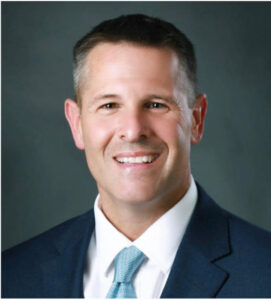Recent shooting tragedies in New York City, Buffalo, and Uvalde, Texas, have brought to the fore discussions about gun control, mental health, and prevention of these senseless attacks.

What ensues is the heartbreak felt by well-meaning people across the country. The digital tapestry of “thoughts and prayers” again blankets social media.
And while the posts and “likes” are genuine, we must have a genuine discussion about how to prevent these mass casualty events.
The profiles of active shooters provide more than some illumination as to who the next attacker may be, and then lends law enforcement and communities the acumen to put those pieces together in time to prevent the next attack.
The investigation of an active shooter attack – whether in public places or schools – typically reveal that there were multiple warning signs. This hindsight is of little comfort to the innocent victims and their families.
It comes as no surprise that a group of neighbors, classmates, coworkers, friends, and family members come forward after the attack with troubling information about the shooter.
They notice that he was abusing drugs or alcohol. Friends say he was increasingly irritable or acting out violently toward others or animals. The attacker had significant issues at work or school. A relationship had recently failed. He was increasingly irritable, violent, or showed a sudden increase in interest in violence.
Many had contact with law enforcement. Families belatedly disclose a mental illness or mental distress. We then learn others knew the active shooter legally purchased the firearms or had access to weapons in the home. Too many people scrolled past or ignored the social media posts or messages of his intentions.
There is a reason this seems familiar.
The pre-attack behaviors of active shooters have distinct patterns and are like profile puzzle pieces needing proactive assembly. And if we can articulate these behaviors and patterns to the public, and put these pieces together to form a clearer picture, perhaps we can prevent further bloodshed.
The FBI engaged its Behavioral Analysis Unit to study correlations of active shooter attacks.
In 2018, the FBI released its conclusions about the pre-attack behaviors of active shooters aptly entitled “A Study of the Pre-Attack Behaviors of Active Shooters in the United States Between 2000-2013.” These studies have continued annually since, without diversion.
The Bureau found distinct, recognizable patterns – those profile puzzle pieces – that provide an additional context for “see something, say something.”
In 2021, the Secret Service, through its National Threat Assessment Center, studied thwarted school shootings in particular. What they found confirmed what the BAU found. School shooters have common observable characteristics and threat assessments save lives. But it is the common puzzle pieces of those assessments which must be our disseminated focus.
The profile puzzle pieces are not particularly surprising, but the frequency in which all active shooters display multiple pieces of the profile puzzle may be.
For instance, nearly all active shooters are male and about one in four had been diagnosed with a mental illness or attempted suicide prior to the attack. About 40% of active shooters spend less than a month planning their attack. Three out of four have a known connection to the attack site and more than half of the targeted victims were confronted in the days and weeks preceding the attack by the assailant.
The data is even more ominous for attack preparations. More than half of the active shooters spent less than one week preparing for the attack, as in buying weapons, ammo, body armor, written notes, et cetera. Ninety-two percent of active shooters legally purchased the firearms used in the attacks or had unfettered access to the weapons.
Profile pieces
Moreover, about four in five active shooters expressed and disclosed a grievance of some kind, whether unfair treatment at school or work, divorce, hatred of others, or some previous physical altercation. Only about 1 in 10 sought fame from their attacks, with most seeking revenge of some sort.
Nearly all active shooters engaged in violent behavior or threats of violence towards people or animals preceding the attack.
Prior to the attacks, 56% of the active shooters left digital clues of the impending intentions. Many chose a date to commemorate a previous mass shooting, such as the Columbine attack of 1999. Nearly 1 in 3 active shooters left behind legacy tokens, or manifestos, to explain their behavior, and did so just hours or days prior to the attack.
More profile pieces
Active shooters in schools have similar characteristics in attacks that were prevented.
Nearly all of the thwarted attacks were in public schools. More than 80% of the schools that foiled active shooter attacks had a physical security measure, such as lockdown capability. About two-thirds had school resource officers, who are typically armed security within patrolling the brick and mortar of the schools.
In fact, the Secret Service surmised that “targeted school violence is preventable when communities identify warning signs and intervene,” especially students in those communities. Sadly, only about 1 in 3 schools had some type of system that would allows the community or fellow students to notify the appropriate authorities.
We must transform observation into action which elicits a preemptive response. Those who observed the troubling behavior did nothing 83% of the time. These concerning behaviors, taken in the collective, give us those red flag puzzle pieces needed to identify the stressors that may be leading to a mass casualty event.
In fact, nearly all active shooters displayed at least four of these troubling behaviors prior to the attack. Since the planning of the attacks normally occur in a short period of time, we must disseminate these red flags to the public and law enforcement, so all have the ability to assemble the profile puzzle pieces.
Too often we discover that these behaviors are discarded as just poor or odd behavior. Too often eventual active shooters are confronted by eventual targets, friends, family members, or even law enforcement without any actions taken. Too often, the pieces lay unconstructed at the peril of public safety.
The profiles of active shooters are no longer anomalies or some mystic event that only clairvoyance might reveal. The puzzle pieces are typical. The puzzle pieces are known. We cannot prevent every attack, but it remains a worthy endeavor to prevent even one.
The intonation of “see something, say something” in the context of terrorism has been digested well by the American public. We must pivot that context to targeted violence in schools and public spaces. We must develop a systematic outlet to report pieces to the puzzle.
We know those in proximity of eventual active shooters always see something. Only a few say something. We now must make it our collective proactive responsibility to put the profile pieces together.
And effectively DO something.
Jay Town, vice president and general counsel at Gray Analytics, a defense contractor in Huntsville, is a former United States Attorney for the Northern District of Alabama. Town was as a career prosecutor focused mainly on violent crime and served 12 years as a United States Marine and judge advocate.
Don’t miss out! Subscribe to our email newsletter to have all our smart stories delivered to your inbox.



